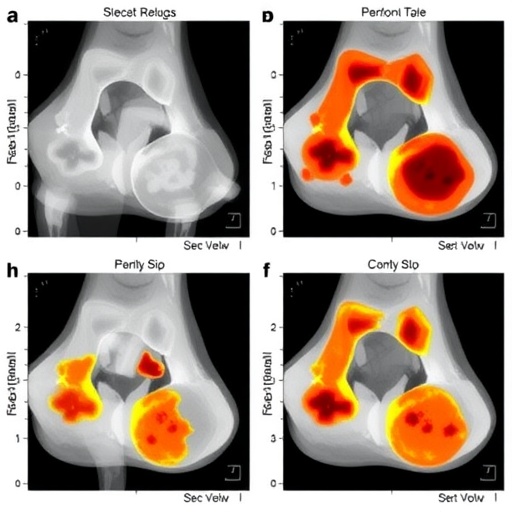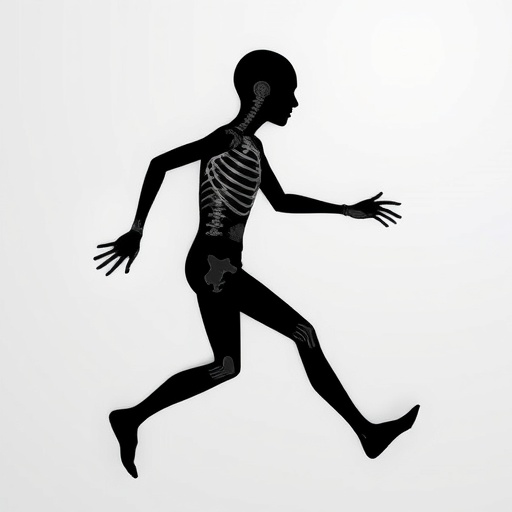For aging men, prostate enlargement is almost as common as graying hair, and yet scientists know very little about why the prostate increases in size or how the process occurs on a molecular level.
In a new study, scientists at the Stanford University School of Medicine have discovered a molecular pattern that flags prostate enlargement, also called benign prostatic hyperplasia, and have even identified two genes that likely play a role in the development of the condition.
The urethra runs directly through the prostate, a gland in the male reproductive system. And while a bigger prostate is not typically life-threatening in itself, it can cause urinary-related symptoms that range from niggling to severe. When the prostate becomes enlarged, it squeezes the urinary tube, causing problems such as incontinence or urinary urgency.
“It can be a terrible bother and, in the most severe cases, can even lead to kidney failure,” said James Brooks, MD, professor of urology. Today’s treatments work to an extent, but don’t completely solve the issues, he added. “Urology as a field needs to do more to own this problem and figure out what the true underlying causes are so we can curb its prevalence and help treat it more effectively.”
The new study is one of the first to describe a molecular landscape that differentiates enlarged prostate tissue from normal tissue. The team of scientists also discovered that the cell growth behind a ballooning prostate is not uniform. Several cell types comprise the prostate, and abnormal growth appears to come from an outburst of specific sets of cells, rather than an overall increase of all cell types.
A paper describing the study is available online now and will be included in the June 20 issue of JCI Insight. Brooks and professors of pathology Jonathan Pollack, MD, PhD, and Robert West, MD, PhD, share senior authorship. Former MD-PhD student Lance Middleton is the lead author.
The plight of the prostate
No other gland in the human body, male or female, expands so predictably with age.
Fifty percent of men who are 50 years old have an enlarged prostate, and with every decade, that number increases by 10 percent (60 percent of men who are 60, 70 percent of men who are 70 and so on). A normal prostate is about the size of a walnut, but it can grow to twice that size, sometimes more.
“Researchers have hunted for mutations or growth factors that could trigger prostate growth, but there hasn’t been much progress in finding a true cause,” Brooks said.
Brooks, Pollack and West took a multipronged approach in search of the answer, analyzing 49 tissue samples from patients who had their prostates removed. The odd thing about prostate enlargement, Brooks said, is that the entire prostate doesn’t grow in unison; only certain parts of it expand. Some areas of the prostate actually remain unchanged.
Genomic analysis showed that most of the enlarged areas of the prostates consisted primarily of two types of cells — epithelial, which make up secretory glands, and stromal fibroblasts, which create structural parts of the prostate. That’s not normal, Brooks said, and it clued the researchers into a new understanding of prostate growth: Only some cell types multiply in an enlarged prostate, taking over — and sometimes eliminating — other cell types, like weeds in a garden plot.
“So it’s not just an increase in cells; it’s a fundamental shift in the type of cells that make up the prostate. It’s something we’ve termed ‘cellular relandscaping,'” Pollack said. “It’s possible that this shift is actually related to the disease progression, and not just arbitrary.” One of the overrun cell types, Pollack said, is thought to be involved in the regulation of epithelial cell growth and development.
65-gene signature
Beyond cell type, the researchers analyzed the molecular state of normal and enlarged prostate tissues, looking at data that showed which genes were active in enlarged prostate samples and which were active in normal samples. By comparing gene activity, they found 65 genes whose expression patterns strongly correlated with prostate enlargement. In other words, tissue samples of enlarged prostates reliably showed this gene signature, whereas healthy samples did not. What’s more, patients whose prostate tissues strongly correlated with this gene signature reported more severe symptoms.
While the overall signature is only correlation at this point, Brooks and Pollack have singled out two genes involved in cell signaling that they suspect may play a role in the condition’s development. One, CXCL13, codes for a protein involved in immune cell recruitment, which Pollack said makes sense because prostate enlargement involves inflammation. The other gene, BMP5, codes for a molecule involved in cell identity and development. Whereas CXCL13 effects are complicated to model in the lab, it’s relatively easy to manipulate BMP5. So the researchers rigged an experiment to test if adding a BMP5-laden concoction could change the characteristics of normal prostate tissue. They found that healthy prostate samples could be coerced into expressing the 65-gene signature seen in enlarged prostates.
“They even start to proliferate a little bit,” Brooks said. “It’s quite remarkable that with this one molecule, we can turn healthy samples into samples that mirror the molecular landscape of an enlarged prostate.”
It’s still early in the research, the scientists said, and more work needs to be done to confirm the role of BMP5 and CXCL13. But it’s a promising step toward finding new avenues for drug development.
###
Other Stanford co-authors of the study are former postdoctoral scholars Zhewei Shen, PhD, and Okyaz Eminaga, PhD; research assistants Sushama Varma, Jewison Biscocho and Rosalie Nolley; research scientists Anna Pollack, MD, Shirley Zhu, Chunfang Zhu, PhD, and Joseph Foley, PhD; former research scientist Xue Gong, PhD; research associates Sujay Vennam and Robert Sweeney, MD; and professor of biomedical data science and of statistics Robert Tibshirani, PhD.
Pollack, Brooks and West are members of Stanford Bio-X and the Stanford Cancer Institute. Brooks is also a member of the Stanford Maternal & Child Health Research Institute. West is also a member of the Wu Tsai Neurosciences Institute at Stanford.
This study was supported by the National Institutes of Health (grant P20DK103093).
Stanford’s departments of Pathology, of Urology, of Biomedical Data Science and of Statistics also supported the work.
The Stanford University School of Medicine consistently ranks among the nation’s top medical schools, integrating research, medical education, patient care and community service. For more news about the school, please visit http://med.
Print media contact: Hanae Armitage at (650) 725-5376 ([email protected])
Broadcast media contact: Margarita Gallardo at (650) 723-7897 ([email protected])
Media Contact
Hanae Armitage
[email protected]





